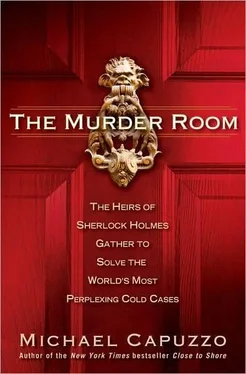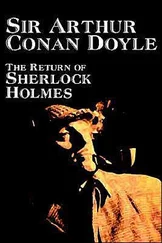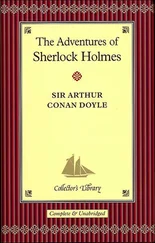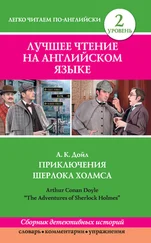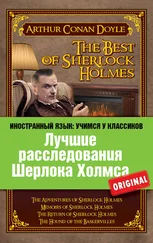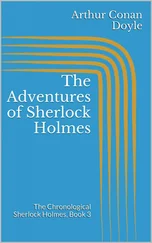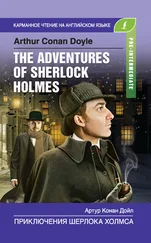In the third row, Walter was still quietly fuming over the slight. His esteemed testimony had been accepted around the world. Who was this West Texas wig, this country gavel jockey, to stand in judgment of him, an international expert?
The judge was unfolding the piece of paper the jury foreman handed to him. He held the paper in front of him, cleared his throat, and read, his voice booming through the courtroom: “We, the jury, find from the evidence, beyond a reasonable doubt, the defendant is guilty of the offense of murder as charged in the indictment.”
Murmurs swept the length of the courtroom. Jim and Barbara Dunn turned and looked at each other for a long moment, holding hands, then Jim threw his arms around Barbara and held on, tears streaming down his face. Walter was thrilled to see husband and wife, now his good friends, emerge into light with one swift embrace. But he couldn’t take his eyes off Hamilton.
Hamilton ’s mouth fell open, uncomprehending, then she raised her chin defiantly and closed her eyes, before she bowed her head and began to cry. “I will never, never, never forget it,” Walter said. “The good psychopath was absolutely convinced she was going to be found not guilty. She was standing proud when she stood up to hear the verdict, and her head just flipped up, instead of down in a submissive position, flipped up in contempt and disbelief. How could anybody ever do this to me? You can see the pathology continues-in her refusal to accept justice, boundaries, her contempt for anyone who would put restrictions on her.”
Judge Shaver sent the jury back to deliberate on a sentence. Even with a murder conviction, they had wide latitude in punishment-they could send Hamilton away for life, or only five years. Two hours later, the jury came back with a sentence. Hamilton stood in front of the judge, head high and proud. He opened the paper and read it: The jury sentenced her to twenty years in prison. Again, Walter noted, Leisha’s face collapsed, as if it were inconceivable she would be locked up.
Outside the courthouse, nine of the jurors, all women, approached Dunn and eagerly told him they’d desperately wanted to give her life. “Oh, God, they hated her,” Walter said. “They didn’t know the word ‘psychopath’ but they knew the type and they said they saw the evil in her. However, they had to compromise because of Billy Bob, Mr. Macho, who just couldn’t believe that a woman could kill a man.” Yet it was satisfying to Walter that his judgment matched that of the community.
The handsome young man Leisha had tried to influence with her big green eyes introduced himself to Dunn. He’d voted resolutely to convict. He told Dunn he was frightened by her charm, and he easily could have ended up like Scott; “There but for the grace of God go I.” Walter, chopping the words with a cigarette on his lip, commented, “That’s fitting. She’d gotten everything before by lying on her back. Not this time. It puts her where she belongs.”
Walter sensed a great weight lifting from Dunn. He had grown red-faced with rage even being in the same courtroom as Hamilton. He’d stalked out of a room when Hamilton’s relatives or supporters appeared. It was time, Walter felt, for him to bury some of his anger. Vengeance is normal, healthy, and sweet to contemplate, Walter counseled him. “In fact, you MUST feel the need for revenge, sweet revenge, deeply.” The just society does not repress it. It’s important to feel the fury of being wronged and the deep pleasure of imagined revenge, the “wrath,” as Aristotle noted in Rhetoric, “sweeter by far than the honeycomb dripping with sweetness… [that] spreads through the hearts of men.”
“Then let it go,” Walter said. “The virtuous man feels the proper anger for the proper things for the proper amount of time. It’s important that he controls himself, moderates it, listens to the law, friends, family, standards of decency.” For Jim Dunn, the time was coming. The time to let go.
Yet the father was not satisfied. Before leaving Lubbock, he had erected a fresh granite tombstone, engraved with Scott’s yellow Camaro, in the Dunn family plot. Bowing his head before the vacant grave, he vowed he would not rest until his son’s body was found and properly buried. Walter was certain that the young man’s body had been completely destroyed to cover up the crime. Scott would never be found. But he could not convince Dunn of the truth. Recognizing the father’s powerful need, he suggested Dunn bury a piece of blood-soaked carpet in the grave. “Remember what the courts decided, Jim. The blood is the body. His blood is Scott.” Dunn agreed.
That evening, the Dunns and Walter celebrated Hamilton ’s sentencing at a local restaurant. Wine and satisfied smiles ringed the table. Walter encouraged feelings of triumph; these were the sweet drafts of justice spiced with revenge. It was time to drink deeply.
The profiler was quite pleased with himself. “In the course of events, it’s most satisfactory to vanquish a power-assertive personality, a killer who believes he can mow down anything in the way with raw power, even more than the other types,” he said. Dunn asked him why. The profiler grinned conspiratorially. “Well, as it happens, I’m rather power-assertive myself.” The two men laughed heartily.
But by the end of the evening, alcohol and euphoria began to ebb. Walter pointed out that Texas ’s lax parole laws would spring Hamilton long before her sentence was up. Walter saw Dunn still warring with the fates, still fumbling along between the rocks of retribution and forgiveness, trying to find the path of the virtuous man. He reached out and put his arm on his friend’s shoulder and said they would press on together. They would do whatever it took, whatever could be done, whatever was just and right.
He looked in his friend’s tragic face and hoped that would be enough.
CHAPTER 40. THE WORST MOTHER IN HISTORY
One evening in October 1997, William Fleisher stood in the formal, polished-wood elegance of the Mütter Museum in Philadelphia studying a gallery of horrors. In the brilliantly lit cases rested the conjoined liver of the world-famous Siamese twins Chang and Eng; the cancerous growth removed from President Grover Cleveland’s throat; shriveled baby corpses; and the Soap Lady, whose fat mysteriously turned to soap lye in the grave in the 1830s. Dr. Thomas Dent Mütter, who founded the world-famous museum of medical oddities in 1858 to train physicians, had contributed a gangrenous hand and a woman’s rib cage torturously compressed by tight lacing. Not far from Supreme Court justice John Marshall’s gallstones was the skull of an ax murderer, an ancestor of the actor Jack Nicholson, who chopped up shop clerk Ellen Jones in 1863 in rural Pennsylvania.
Fleisher was waiting to hear forensic anthropologist Bill Bass discuss “Death’s Acre,” also known as “The Body Farm,” his Tennessee laboratory for scientific study of decomposing bodies. Fleisher prided himself on his ability to spot a reporter crashing a roomful of cops-the longish hair, softer slacks and shoes, open collar, no tie-and saw one in the crowd. It was Philadelphia magazine writer Stephen Fried, who’d arranged to get into the speech through the good offices of a source, New Jersey pathologist Jim Lewis, just so he could speak with Fleisher. Fleisher turned to listen. This was the reporter’s chance.
“I want to talk to you about Marie Noe,” Fried said. Fried, winner of national awards for investigative reporting, said he had been working on the long-dormant story of Marie Noe, the tragic Philadelphia woman who lost eight of her ten children, born between 1949 and 1968, to crib death. In 1963, Life magazine wrote a heartrending story of the deaths of Richard, Elizabeth, Jacqueline, Arthur Jr., Constance, Mary Lee, Cathy, and Little Artie despite the couple’s heroic attempts to make a family. Never in American history had such an awful fate befallen a mother. Fleisher knew all about sad Marie Noe; he waited for Fried to reach his point.
Читать дальше
